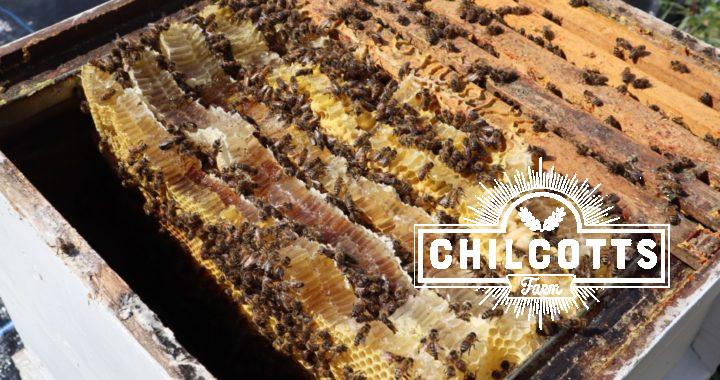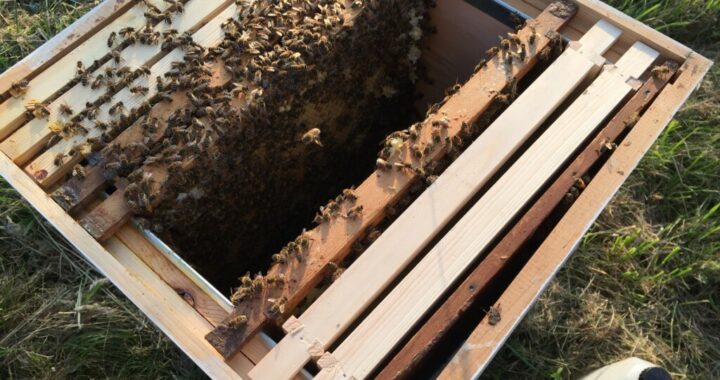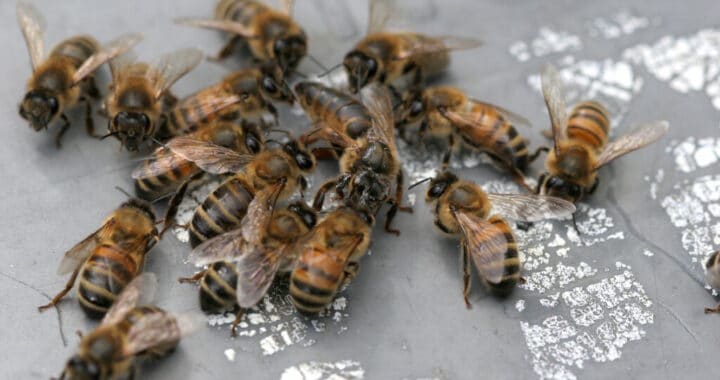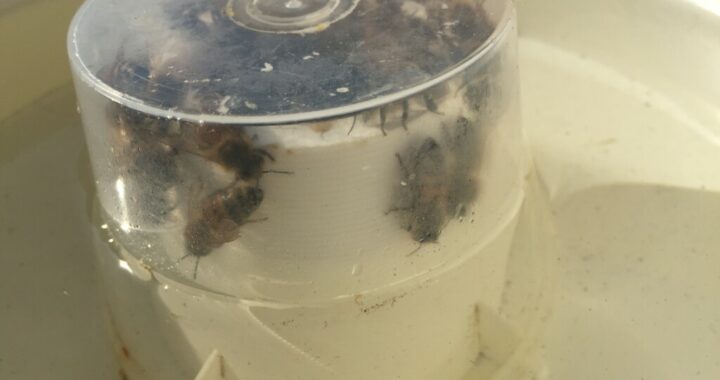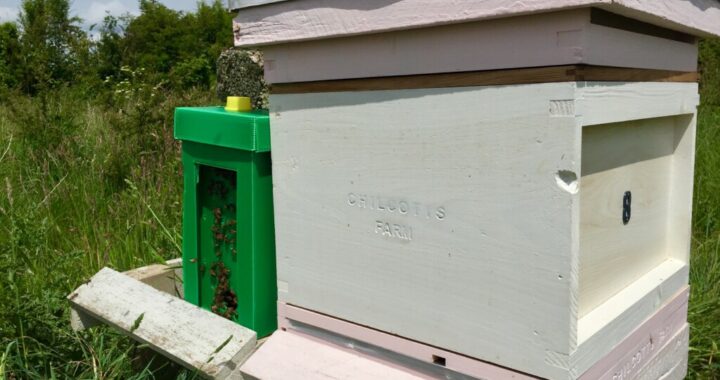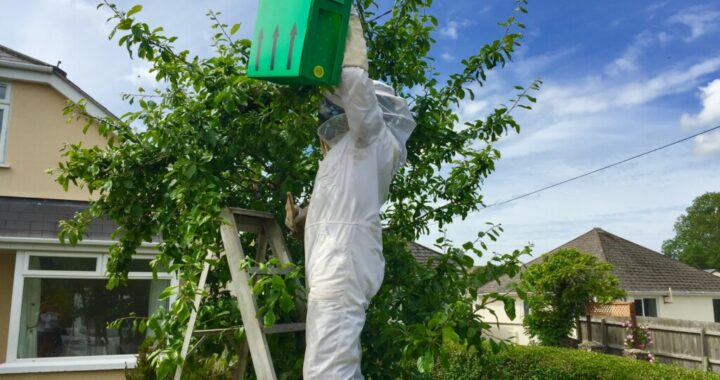Last year I housed a honey bee swarm I collected from the local area. On returning, I put the swarm into a new hive with about half the intended frames I had to hand. I needed to assemble more and intended to put the remaining frames in the following day.
However, I didn’t get the chance to return to the hive for a couple of days. At this point the colony had drawn wild comb which was hanging from the crown board (the lid on the top of the hive).
In a dilemma, I decided to leave the hive until the following season and sort it out then.
Yesterday, was the day. In the main picture you can see 5 pieces of wild comb. Each of these were packed with brood (growing baby bees).
I took three pieces of the wild comb and attached each piece into a frame using elastic bands (not sure how this will work). I then transferred these to a new hive with new frames. The new hive was put back in the same place as the original hive.
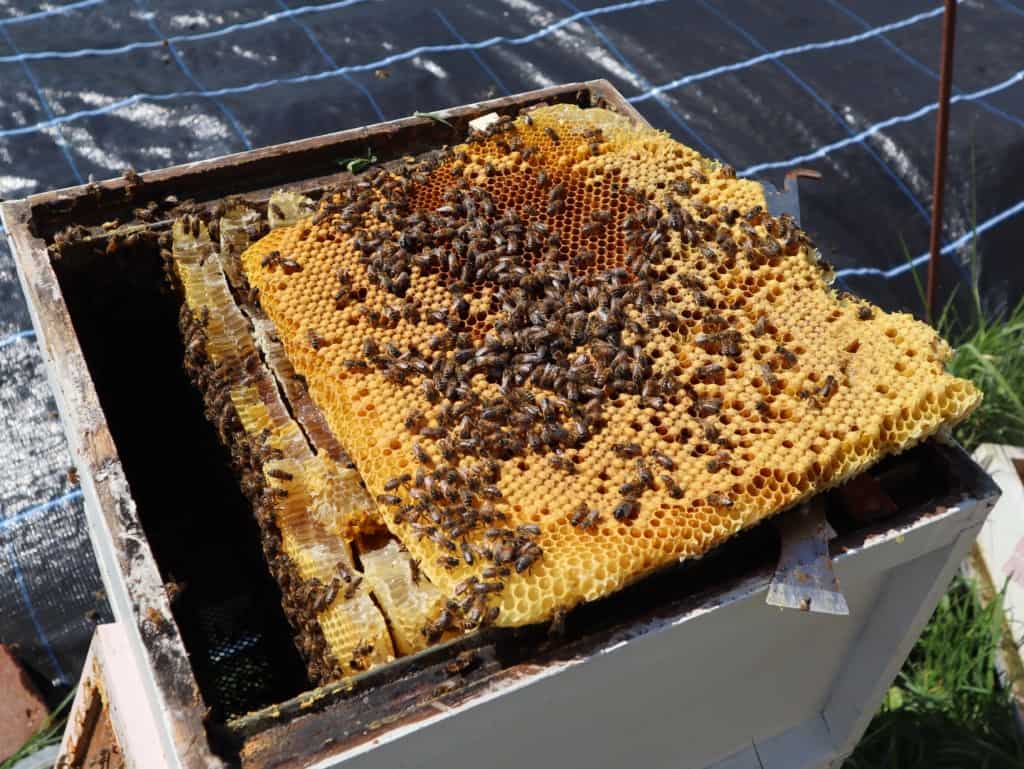
Wild comb resting on the top of the hive 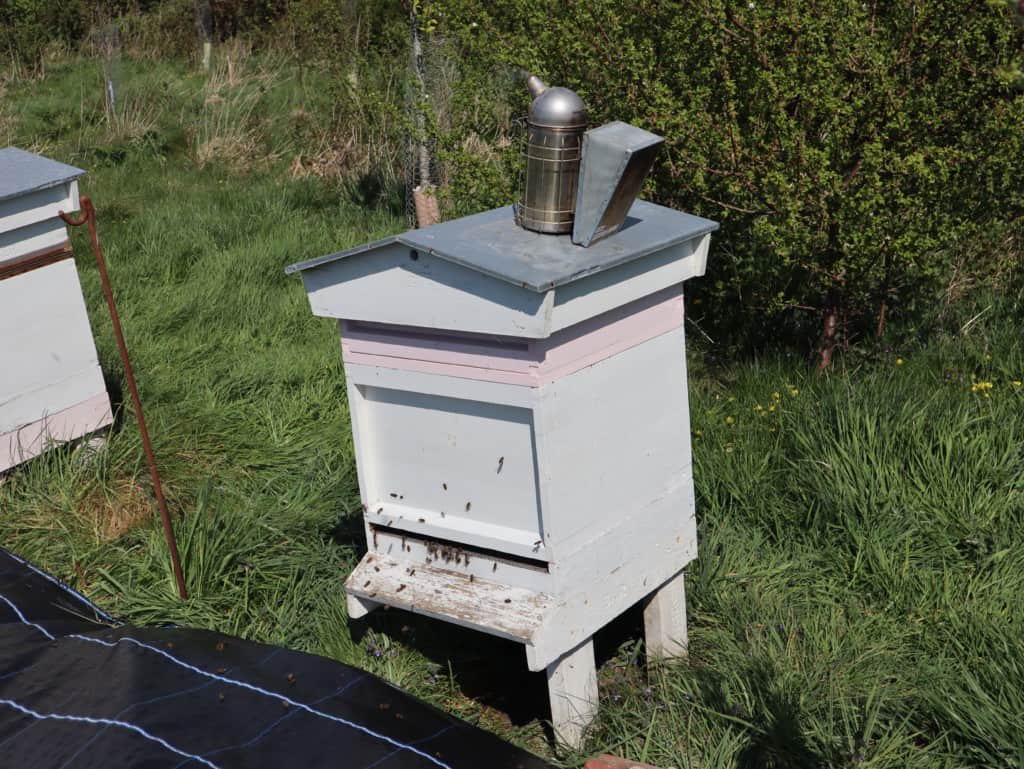
Hive before the tidy up and removal of wild comb 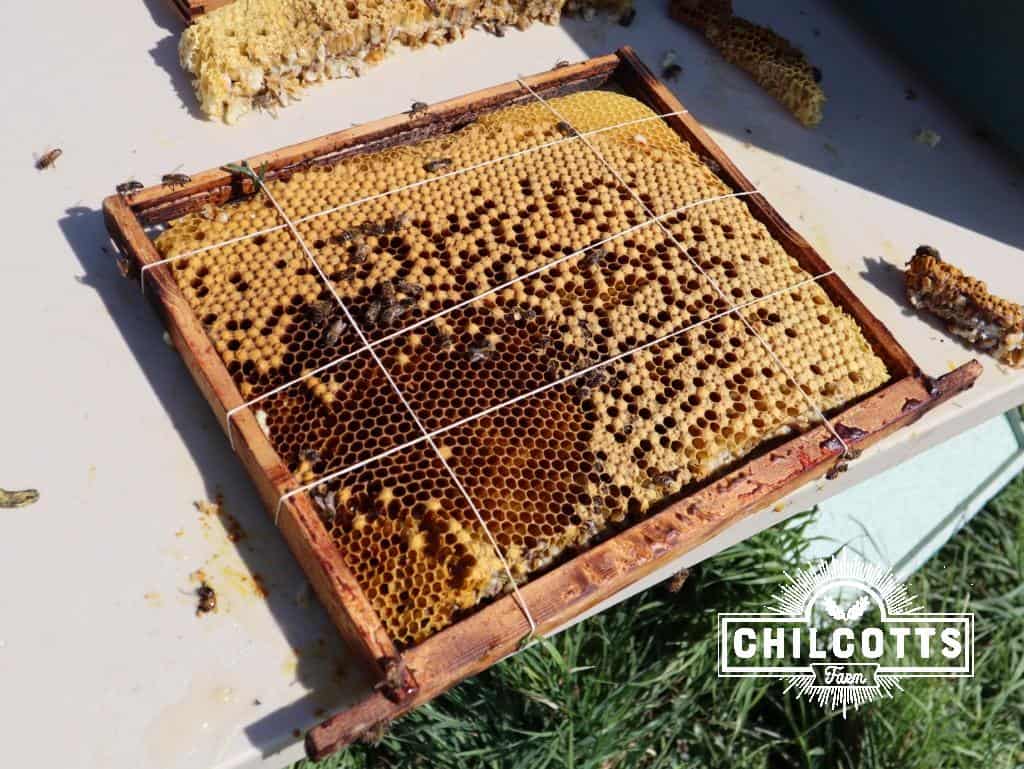
Wild comb attached into a frame with elastic bands
I couldn’t find the queen, but hopefully she was somewhere amongst the existing frames or was brushed off into the new hive as I removed each piece of wild comb.
Now all tidy and manageable, the hive can be easily inspected. Next week, I will go in and see if I can find the queen or evidence that she is still laying.

